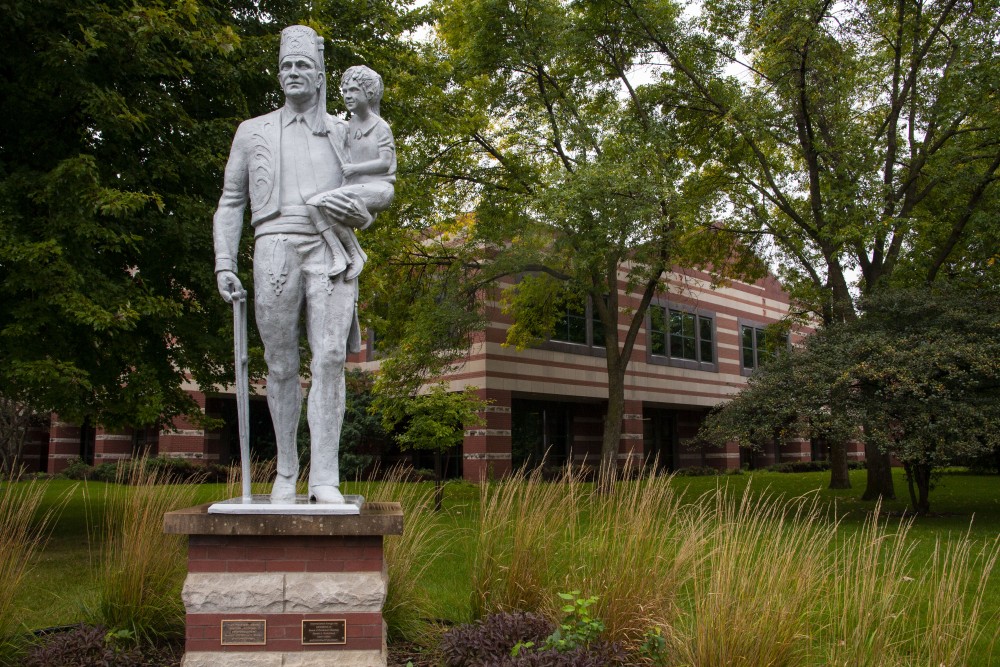The University of Minnesota is aiming to be a top 20 medical school once again, and recent announcements that could reinforce collaboration may bring the school closer to realizing that goal.
The M Health Fairview brand and logo were first launched Tuesday, symbolizing further progress in the University and Fairview Health Services partnership. The University is also contemplating the purchase of the Shriners Hospital building to eventually house a new institute for specialized pediatric care. Both announcements center around an approach to healthcare that integrates academic research, education and clinical care.
“I think it’s absolutely a number one goal, imperative of our University mission, to restore the University Medical School ranking to a top 20 where we ought to be,” said Board of Regent Vice Chair Steve Sviggum.
The University is currently number 43 for medical research and number 10 for primary care in the latest rankings by U.S. News and World Report.
The Medical School slipped from the top 15 in National Institute of Health funding, a common metric for research excellence, in the 1980s and currently sits at number 30.
Board of Regents Chair Ken Powell said becoming a top medical school is currently the number one priority for the board and has been an emphasis for several years.
“Healthcare and the Medical School and medical research are just so core to what the University does, they’re so core to our mission, and they’re so important to the people of Minnesota,” Powell said.
Galvanizing the partnership
M Health Fairview connects Fairview’s wide network of hospitals and primary care clinics to the University’s academic health research.
The partnership was approved by regents a year ago, following years of discussion.
The agreement states Fairview would pay the University Medical School $35 million in 2018, with annual payments increasing up to $50 million by 2022. This type of support is in line with similar partnerships across the country, according to a Medical School spokesperson.
“It’s not simply the classic forms of the organization coming together, but really creating an environment that allows us to innovate and focus on our customers, our patients,” said James Hereford, Fairview president and CEO.
About 70 percent of Minnesota’s physicians were trained at the University of Minnesota Medical School, and Hereford said the integration provided by the partnership offers a greater platform for further teaching opportunities.
Healthcare is the fastest growing industry in Minnesota, with an estimated employment increase of nearly 11 percent from 2016 to 2026, according to the Minnesota Department of Employment and Economic Development.
“We are always looking for a better way,” said Jakub Tolar, dean of the University of Minnesota Medical School and vice president for Academic Clinical Affairs. “How to treat, how to cure … how to bring the discoveries quickly and efficiently to the patients and how to improve the health of Minnesotans.”
Shriners Hospital and the Institute for Child and Adolescent Brain Health
The University’s Board of Regents is examining a $22.5 million purchase of the Shriners Hospital building, which would house a proposed specialty pediatric clinic.
Tolar and the dean of the College of Education and Human Development presented the proposal to create the Institute for Child and Adolescent Brain Health to the regents.
Shriners Hospital would offer a new setting to connect physicians and researchers to patients. The facility was initially constructed by the Shriners in 1991 to serve orthopedic needs of children and families.
The Shriners are currently constructing a building in Woodbury where they will move their pediatric orthopedic clinic.
The University’s proposed institute would focus on healthy brain development in children and adolescents, addressing various concerns such as epilepsy, depression and learning disabilities.
University leadership estimates around $30 million in renovations to prepare the site for the envisioned institute. Although no purchase agreement has been signed, the sale was presented to the Board of Regents last month and will be discussed again this month.
The University intends to fundraise for the costs of purchasing and renovating the property. The annual building and operating costs are estimated at $3 million, which would be paid for by units within the facility.
“It really allows the University to bring together a bunch of very strong capabilities that we have in one place, and that will be able to serve patients in a very comprehensive way,” said Board Chair Powell.
The more than 100,000 square foot facility sits on 10 acres of land about a mile from East Bank campus. Dean Tolar said at the meeting it is a “quiet” place with high accessibility for children and their families.
Shriners Hospital offers two operating rooms, 19 inpatient rooms, 19 clinic exam rooms, indoor and outdoor recreational spaces, a pool and a hotel.
“This building came at a perfect time,” Tolar said at the meeting. “If you wanted to design this, you would probably design something like this. So it is an opportunity that comes once a decade.”








